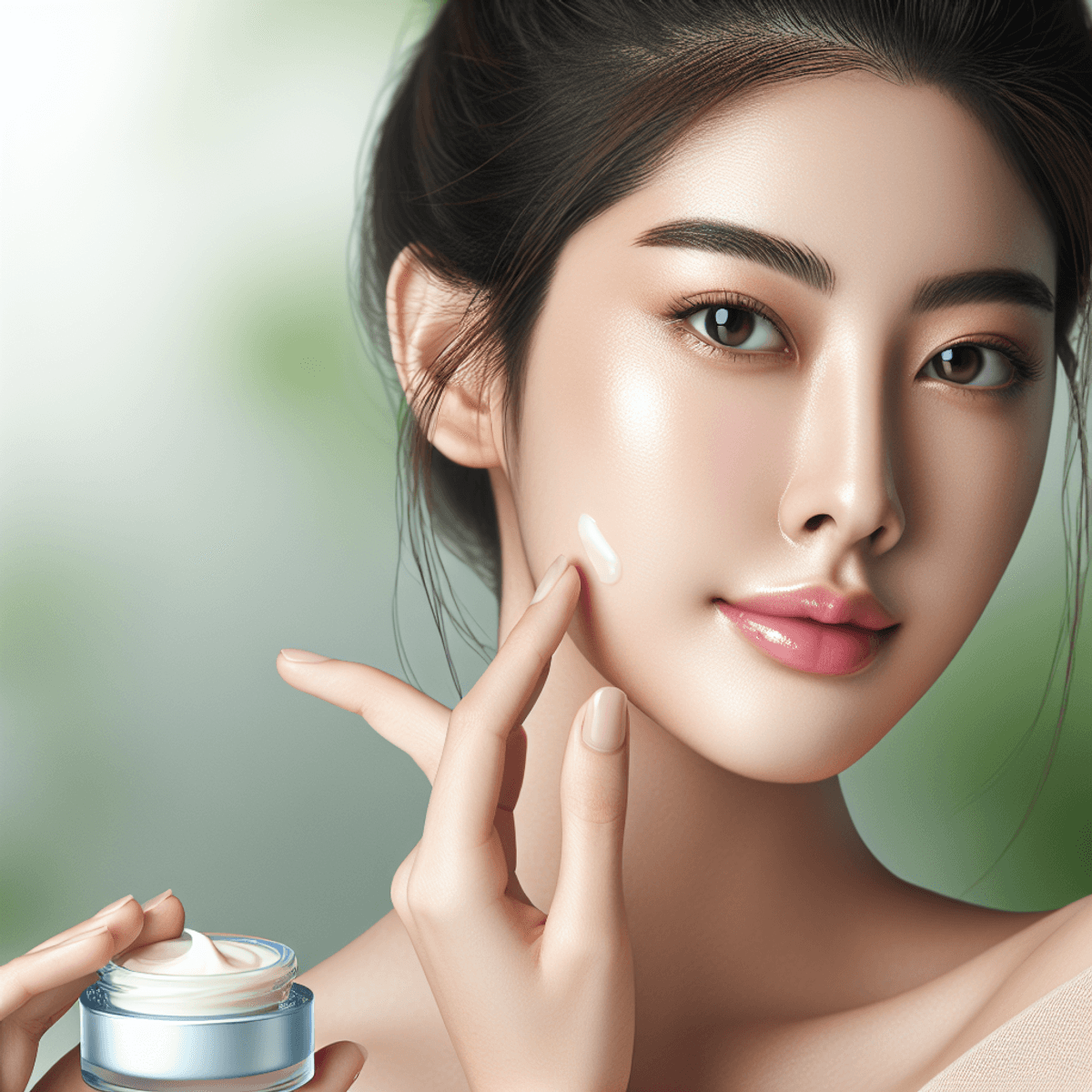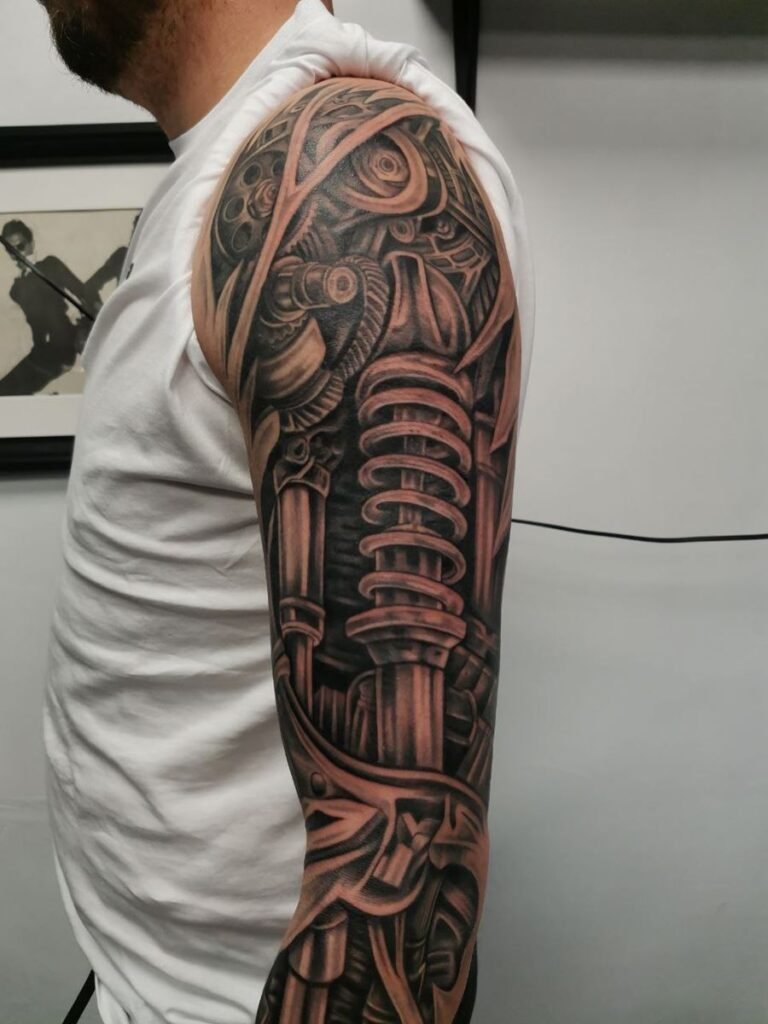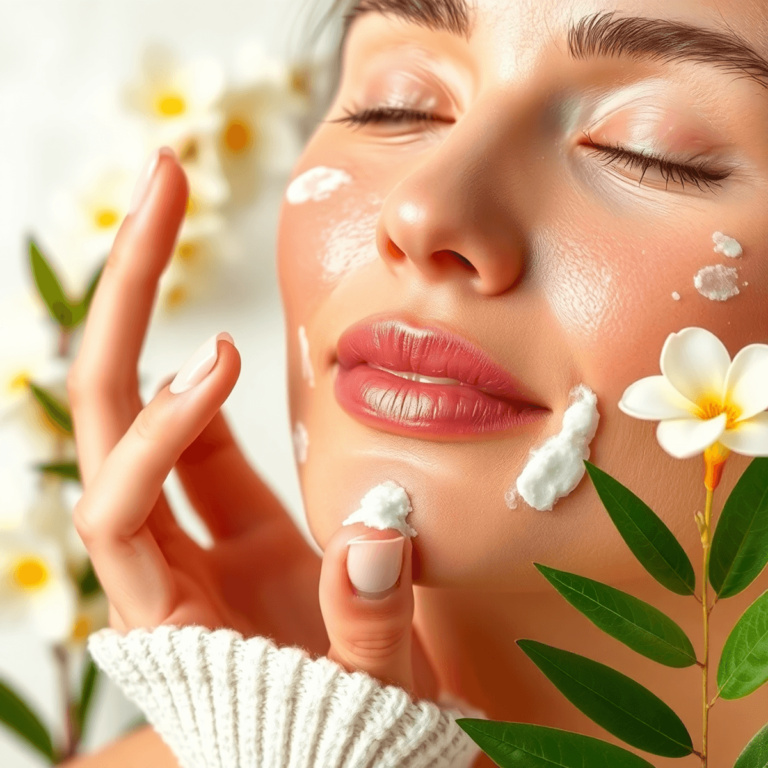How To Remove Pimple Marks

Introduction
Pimple marks, also known as post-inflammatory hyperpigmentation, are dark spots that remain on your skin after acne heals. These marks occur because of increased melanin production caused by the inflammation from pimples. Unlike scars, which can be raised or indented, pimple marks are usually flat and may fade over time.
Getting rid of pimple marks is important for several reasons:
- Self-esteem: Clear skin can significantly boost your confidence.
- Skin health: Treating pimple marks can improve the overall texture and appearance of your skin.
- Preventive care: Early intervention can prevent these marks from becoming permanent.
There are different ways to effectively remove pimple marks:
- Home Remedies
- Over-the-Counter (OTC) Treatments
- Professional Treatments
Each option has its own advantages and potential downsides, which will be discussed in the following sections. By understanding these methods, you can find a solution tailored to your skin’s needs.
Understanding Pimple Marks
What Are Pimple Marks?
Pimple marks, often referred to as post-inflammatory hyperpigmentation (PIH), are flat, discolored spots that remain on the skin after acne lesions heal. Unlike acne scars, which can be raised or indented, pimple marks are typically smooth and dark due to excess melanin production. These marks can be particularly bothersome because they affect the skin’s even tone and can linger for months to years.
The Role of Inflammation in the Formation of Pimple Marks
Inflammation plays a significant role in the formation of pimple marks. When a pimple forms, the body’s immune response triggers inflammation to combat the infection. This inflammation can damage surrounding skin tissue, leading to an increase in melanin production as a protective mechanism. As a result, once the acne lesion heals, it leaves behind a dark spot known as a pimple mark.
How Excess Melanin Contributes to Dark Spots on the Skin
Melanin is the pigment responsible for skin color. When inflammation occurs due to acne, melanocytes (the cells producing melanin) become overactive. Excess melanin settles into the inflamed area, creating dark spots or patches on the skin. This process is known as hyperpigmentation. These dark spots can be more noticeable on individuals with darker skin tones due to their naturally higher levels of melanin.
To address these issues effectively:
- Understanding Causes: Knowing that inflammation and excess melanin contribute significantly helps target treatments.
- Effective Treatments: Both home remedies and professional treatments focus on reducing pigmentation and calming inflammation.
Different methods aim to either reduce melanin production or speed up the turnover of pigmented cells, aiding in how to get rid of facial dark spots effectively. It’s also worth noting that certain lifestyle changes and skincare routines can help manage these conditions better. For instance, adopting a diet rich in antioxidants may assist in reducing inflammation and promoting healthier skin. You can learn more about this approach in our comprehensive guide on nutrition for skin health. Additionally, understanding how different treatments work can empower you to make informed decisions about your skincare regimen. For an in-depth look at various treatment options available, including their efficacy and potential side effects, you might find our resource on acne treatment options particularly useful.
Home Remedies for Pimple Marks
Benefits of Using Natural Remedies to Treat Pimple Marks
Natural treatments for pimple marks offer several advantages:
- Gentle on the Skin: Unlike some chemical treatments, natural remedies are often less harsh and reduce the risk of skin irritation.
- Cost-Effective: Many natural remedies use common household items, making them an affordable option.
- Holistic Approach: These treatments often provide additional benefits such as moisturizing the skin and reducing inflammation, aligning with the principles of complementary and integrative medicine.
1. Vitamin C
Vitamin C is a powerful depigmenting agent that works by inhibiting melanin production. This can help lighten dark spots and improve overall skin tone.
How It Works:
Vitamin C neutralizes free radicals and reduces oxidative stress, which helps to prevent melanin synthesis.
How to Use:
- Opt for serums containing L-ascorbic acid, as this form is most effective in penetrating the skin.
- Apply a few drops to clean, dry skin before moisturizing. Use it once daily, preferably in the morning.
2. Aloe Vera
Aloe Vera is known for its soothing properties and ability to stabilize melanin levels.
How It Works:
Aloe Vera contains aloesin, which can inhibit tyrosinase activity – an enzyme responsible for melanin production.
How to Use:
- Extract fresh aloe vera gel from the plant and apply it directly to the affected areas.
- Leave it on for 20 minutes before rinsing off with lukewarm water. Repeat this process daily for best results.
3. Grapeseed Extract
Grapeseed extract is another effective remedy for lightening dark spots due to its antioxidant properties, as detailed in this article.
How It Works:
The proanthocyanidins in grapeseed extract help reduce hyperpigmentation by inhibiting melanin synthesis.
How to Use:
- Use grapeseed extract in serum form or mix it with your regular moisturizer.
- Apply it consistently twice a day to see noticeable improvements.
Additional Remedies
Other natural remedies include honey and black seed oil, both of which have wound healing and discoloration reduction properties.
Honey:
Honey’s antibacterial and anti-inflammatory properties make it ideal for treating acne scars.
- Apply raw honey directly to pimple marks and leave it on for 15-20 minutes before washing off.
- Use this treatment daily.
Black Seed Oil:
Known for its regenerative properties, black seed oil can help fade pimple marks over time as supported by various studies including one published here.
- Massage a few drops of black seed oil onto the affected areas twice daily.
These natural treatments not only target pimple marks but also contribute to healthier skin overall. Additionally, grapeseed extract has been shown in studies like this one from the NCBI to have significant benefits when used regularly on the skin.
Over-the-Counter (OTC) Treatments for Pimple Marks
OTC treatments for pimple marks offer a variety of solutions designed to lighten dark spots and promote skin renewal. These products are readily available and can be incorporated into your daily skincare routine without requiring a prescription. The primary ingredients in these topical treatments for pimple marks include retinoids, alpha hydroxy acids (AHAs), salicylic acid, and kojic acid.
Retinoids
Benefits:
- Promotes cell turnover
- Reduces hyperpigmentation
- Improves skin texture
Correct Usage:
- Apply a small amount to clean, dry skin at night.
- Start with lower concentrations to minimize irritation.
- Use sunscreen during the day as retinoids increase sun sensitivity.
Potential Side Effects:
- Dryness
- Redness
- Peeling
Alpha Hydroxy Acids (AHAs)
How They Aid in Exfoliation and Lightening:
AHAs like glycolic acid and lactic acid exfoliate the top layer of the skin, removing dead cells and revealing brighter, newer skin underneath. This process helps reduce the appearance of dark spots over time.
Product Recommendations:
- Glycolic Acid 7% Toning Solution by The Ordinary
- Lactic Acid 5% + HA by The Ordinary
Salicylic Acid
Role in Acne Treatment and Fading Marks:
Salicylic acid penetrates deep into the pores to clear out excess oil and dead skin cells. It also possesses anti-inflammatory properties that help reduce redness and swelling associated with acne, aiding in the prevention of new marks while fading existing ones.
Popular Formulations:
- Paula’s Choice Skin Perfecting 2% BHA Liquid Exfoliant
- Neutrogena Oil-Free Acne Wash
Kojic Acid
Effectiveness in Reducing Pigmentation:
Kojic acid is derived from fungi and works by inhibiting tyrosinase, an enzyme involved in melanin production. This reduction in melanin helps lighten dark spots and even out skin tone.
Cautionary Advice:
While effective, kojic acid can cause sensitivity or allergic reactions in some individuals. It is advisable to perform a patch test before full application and use it as directed to avoid potential side effects such as redness or irritation.
Understanding these OTC options allows you to make informed decisions about incorporating them into your skincare regimen for more effective management of pimple marks.
Professional Treatments for Stubborn Pimple Marks
When to Consider Professional Treatments
Professional treatments might be an ideal choice when over-the-counter products and home remedies fail to deliver the desired results. If you have stubborn pimple marks that persist despite diligent care, or if the marks are significantly affecting your self-esteem, consulting a dermatologist can provide more effective solutions. Severe scarring or extensive hyperpigmentation often require specialized treatments that only professionals can offer.
Dermatological Procedures Available
Chemical Peels
Chemical peels involve applying a chemical solution to the skin, which causes it to exfoliate and eventually peel off. This process reveals newer, less pigmented skin underneath.
- Types of Chemical Peels:TCA (Trichloroacetic Acid): Medium-depth peel effective for moderate pimple marks.
- Glycolic Acid: A lighter peel that targets superficial dark spots and improves skin texture.
- Expected Outcomes: Reduction in pigmentation, improved skin texture, and a more even complexion.
- Aftercare Tips: Avoid sun exposure, use gentle skincare products, and follow your dermatologist’s post-treatment guidelines to ensure proper healing.
Microdermabrasion
Microdermabrasion is a non-invasive procedure that uses tiny crystals or a diamond-tipped wand to exfoliate the outer layer of the skin.
- Benefits: Smoother skin texture, reduction in mild pigmentation, stimulation of collagen production.
- Potential Risks: Temporary redness and sensitivity; rare cases of minor bruising.
- Number of Sessions Needed: Typically requires multiple sessions for optimal results, usually spaced a few weeks apart.
Laser Treatments
Laser treatments use concentrated light beams to target pigmented areas. They are highly effective but can vary significantly based on the type of laser used.
- Types:Fractional Laser Therapy: Targets small areas of the skin leaving surrounding tissues intact, promoting faster healing.
- Mechanism of Action: Breaks down melanin in dark spots and stimulates collagen production.
- Downtime Required: Varies; some lasers may require minimal downtime while others could necessitate several days of recovery.
- Cost Considerations: Generally higher than other treatments but justified by the effectiveness and precision offered.
Microneedling
Microneedling involves using fine needles to create tiny punctures in the skin. This stimulates the body’s natural healing processes and promotes collagen production.
- Effectiveness in Scar Reduction: Very effective for reducing both pimple marks and deeper acne scars.
- Personal Experience/Testimonials:
“After three microneedling sessions, my acne scars have visibly reduced. The downtime was minimal and my skin feels rejuvenated.”
By exploring these professional treatments, you can find an option tailored to your needs and achieve clearer skin.
Preventive Measures to Avoid New Pimple Marks
A crucial step in any skincare routine to prevent pimple marks is addressing existing blemishes or breakouts promptly and effectively. Prevention not only reduces the likelihood of dark spots but also helps maintain overall skin health.
Key Tips for Prevention:
- Avoid Picking or Squeezing Blemishes: Touching or squeezing pimples can worsen inflammation and lead to scarring. It also increases the risk of infection, which can exacerbate the formation of pimple marks.
- Maintain Good Skin Hygiene:
- Cleanse Regularly: Use a gentle cleanser twice a day to remove dirt, oil, and impurities.
- Exfoliate Wisely: Incorporate exfoliation into your routine to slough off dead skin cells but avoid over-exfoliating as it can irritate the skin.
- Moisturize: Keeping your skin hydrated helps maintain its barrier function and promotes healing.
- The Role of Sunscreen:
- Protection Against UV Damage: Ultraviolet (UV) rays can darken existing pimple marks and contribute to new dark spots. Applying a broad-spectrum sunscreen with at least SPF 30 daily shields your skin from harmful UV radiation.
- Reapplication: To ensure continuous protection, reapply sunscreen every two hours, especially if you are outdoors or sweating.
Additional Preventive Strategies:
- Use Non-Comedogenic Products: Opt for skincare and makeup products labeled as non-comedogenic, meaning they won’t clog pores. This reduces the chances of breakouts that can lead to pimple marks.
- Healthy Lifestyle Habits:
- Balanced Diet: Consuming a diet rich in antioxidants, vitamins, and minerals supports skin health. Foods like fruits, vegetables, nuts, and fish are beneficial.
- Hydration: Drinking plenty of water aids in flushing out toxins and keeping your skin hydrated.
- Adequate Sleep: Ensure you get enough sleep as it allows your skin to repair and regenerate.
By incorporating these preventive measures into your daily routine, you increase your chances of maintaining clear skin free from pimple marks.
Consulting a Dermatologist: When & Why You Should Seek Professional Help?
Signs That Indicate the Need for Professional Consultation
Professional advice from a dermatologist on pimple scars treatment plans based on individual skin types can be invaluable. Consider seeking professional help if you notice:
- Severe Scarring: Deep, pitted scars or raised keloid scars that do not improve with home remedies or OTC treatments.
- Lack of Improvement: Persistent pimple marks that show little to no improvement despite consistent use of home and OTC treatments over several months.
What to Expect During a Dermatologist Visit
Understanding what to expect during your dermatologist visit can help alleviate any concerns. Here’s a typical process:
1. Skin Assessment
Dermatologists use various techniques to assess your skin condition, such as:
- Visual Examination: Inspecting the affected areas to determine the type and extent of scarring.
- Dermatoscopy: Using a dermatoscope to get a magnified view of the skin’s surface.
- Patient History: Discussing your skincare routine, previous treatments tried, and any underlying health conditions.
2. Personalized Treatment Options
Based on your individual skin type (oily, dry, sensitive) and the severity of scarring (mild, moderate, severe), dermatologists may recommend personalized treatment options such as:
- Chemical Peels: Effective for mild to moderate scarring. Dermatologists choose the type and concentration based on your skin type and needs.
- Microdermabrasion: Suitable for superficial scars and improving overall skin texture.
- Laser Treatments: Fractional laser therapy can target deeper layers of the skin for more severe scarring.
- Microneedling: Promotes collagen production and is effective for various scar types.
These tailored approaches ensure you receive optimal care for your unique skin concerns.
By consulting a dermatologist, you gain access to advanced treatments that may not be available over the counter. This professional guidance can significantly enhance your journey towards clearer, healthier skin.
If you’re preparing for your first visit, it’s beneficial to familiarize yourself with what to expect during a dermatologist appointment. This includes understanding the various assessment techniques they might use and how you can prepare effectively for your appointment.
Conclusion
Navigating the many options for treating pimple marks can be overwhelming. It’s crucial to find a personalized approach that suits your skin’s unique needs and sensitivities. Whether you choose home remedies, over-the-counter solutions, or professional treatments, understanding how your skin reacts is vital.
Exploring at-home remedies such as vitamin C, aloe vera, and grapeseed extract can offer natural and cost-effective solutions. These ingredients not only help in lightening dark spots but also provide additional skin benefits like hydration and antioxidant protection.
For those seeking quicker results, over-the-counter treatments with active ingredients like retinoids, AHAs, salicylic acid, and kojic acid present effective alternatives. However, it’s essential to monitor how your skin responds to avoid irritation or increased sensitivity.
Professional interventions become indispensable when dealing with stubborn or severe pimple marks. Procedures like chemical peels, microdermabrasion, laser treatments, and microneedling offer advanced solutions targeting deeper layers of the skin for more dramatic results.
Finding the right balance between these methods allows you to tailor a skincare routine that not only addresses existing pimple marks but also prevents new ones from forming. Regular consultation with a dermatologist ensures that your approach remains effective and safe, adapting to any changes in your skin’s condition.
Join the Conversation Below!
We’d love to hear from you! Have you tried any of the methods discussed in this article? Share your experience with us regarding any specific method that worked well for removing pimple marks.
- What home remedies have you found effective?
- Which OTC treatments gave you the best results?
- Have you undergone any professional treatments, and what were your experiences?
Your insights can be incredibly valuable to others who are navigating similar skin concerns. Feel free to discuss any unique solutions that you found particularly helpful.
Stay connected by following our blog and channel regularly. This way, you’ll stay updated with more informative content related to skincare concerns and beyond.
Your journey towards clear skin is unique, and sharing it could inspire and guide someone else.
FAQs (Frequently Asked Questions)
What are pimple marks and why are they important to address?
Pimple marks, also known as post-inflammatory hyperpigmentation, are dark spots that appear on the skin after a pimple has healed. Addressing them is important as they can affect skin appearance and confidence. Various treatment options are available to help reduce these marks.
What natural remedies can help in reducing pimple marks?
Natural remedies such as Vitamin C, Aloe Vera, and Grapeseed Extract can be effective in treating pimple marks. Vitamin C acts as a depigmenting agent, Aloe Vera stabilizes melanin levels, and Grapeseed Extract helps lighten dark spots. Additional remedies like honey and black seed oil may also aid in wound healing and discoloration reduction.
What over-the-counter treatments are available for pimple marks?
Over-the-counter treatments for pimple marks include retinoids, Alpha Hydroxy Acids (AHAs), salicylic acid, and kojic acid. These products help in exfoliating the skin, fading marks, and reducing pigmentation. It’s important to follow usage instructions carefully to avoid potential side effects.
When should I consider professional treatments for stubborn pimple marks?
Consider professional treatments when home or over-the-counter methods do not yield satisfactory results or if scarring is severe. Dermatological procedures like chemical peels, microdermabrasion, laser treatments, and microneedling can provide effective solutions for scar reduction.
What preventive measures can I take to avoid new pimple marks?
To prevent new pimple marks, maintain a consistent skincare routine that includes proper sun protection against UV damage. Avoid picking or squeezing blemishes, practice good skin hygiene, and ensure regular use of sunscreen to protect the skin.
When should I consult a dermatologist regarding my pimple scars?
Consult a dermatologist if you experience severe scarring or if there is no improvement with home or over-the-counter treatments. A dermatologist can provide personalized treatment plans based on your skin type and scarring severity.










